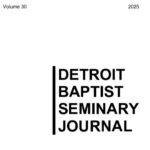Killing Off Providence for the Romance of a Miracle
On 12 October 2012 the Roman Catholic Church inducted a new class of saints, including a 17th-century Mohawk woman named Kateri Tekakwitha. Hope for the canonization of this patroness of Montreal has been in the works for nearly 130 years, but her sainthood was delayed indefinitely for lack of concrete proof of the two miracles requisite to sainthood. Kateri was beatified in 1980 (an honor that requires only one miracle), but could not be canonized (an honor that requires at least two miracles). In 2006, however, a relic associated with Kateri was credited with curing 5-year-old Jake Finkbonner of a flesh-eating bacterial infection. With this last prerequisite in place, the path was cleared for Kateri to become a saint.
What interested me in the article, however, is the author’s admission that during the course of Jake’s illness, “doctors…performed 29 surgeries to save his life and reconstruct his face.” Kinda tepid for a miracle, don’t you think?
Unlike this recent event, biblical miracles not only halted disease, they rendered the diseased areas perfect and scar-free (2 Kgs 5:14), rendered disease-withered limbs whole (Luke 6:10), and were so spectacular that even unbelievers were forced to concede that an “outstanding miracle” had occurred and “we cannot deny it” (Acts 4:16). That’s the genius of miracles. Miracles corroborated the identity and message of God’s authorized spokesmen (2 Cor 12:12), the arrival of Israel’s Messiah (Matt 11:3–5), and the validity of his kingdom offer (Heb 6:5). Such vital revelation required indisputable proof, and that proof came in the form of miracles —miracles so compelling that even skeptics acknowledged them.
Events that require 29 surgeries to finish the job are not miracles.
That is not to say that God was not at work in the healing of this little boy. Indeed, the hand of God was mightily at work in the efforts of 29 surgeons who examined elements of the divine order so as to construct biological and pathological solutions for Jake’s illness. God was at work orchestrating the intersection of natural law, the imago dei, the dominion mandate, and the common grace secured by Christ’s atonement in order to effect his ends. The fact that this boy was cured is a tribute to the magnificent providence of God. But it wasn’t a miracle. In fact, to suggest that it was a miracle is to insult God.
Confusing providence and miracle undermines both the transcendent uniqueness of miracle and the immanent comfort of divine providence. It will never do to absorb the one into the other.


